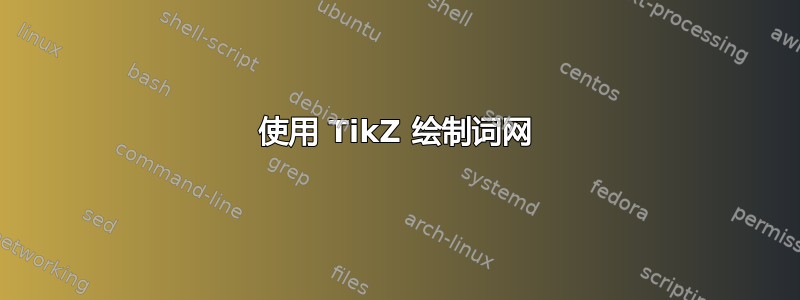
我尝试使用 TikZ 绘制这样的词网

但我真的不知道从何开始。有人能帮我画一下这个图吗?不幸的是,我没有足够的时间阅读有关 TikZ 的书籍。这是我今天的家庭作业的一部分 :(
答案1
有可能利用强大的forest包裹:
\documentclass{article}
\usepackage{forest}
\begin{document}
\begin{forest}
[entity
[inanimate-object
[natural-object
[geological-formation
[natural-elevation [hill], tikz={
\foreach \nodenam/\nodelabel in {!ul/0.000113,!u/0.000189}
\node[anchor=east,xshift=-10pt] at (\nodenam.west) {$\nodelabel$};
}
]
[shore [coast], tikz={
\foreach \nodename/\nodelabel in {!ul/0.0000216,!u/0.0000836,!uu/0.00176,!uuu/0.0163,!uuuu/0.167,!ur/0.365}
\node[anchor=west,xshift=10pt] at (\nodename.east) {$\nodelabel$};
}
]
]
]
]
]
\end{forest}
\end{document}

答案2
基于树的解决方案
一个可能的解决方案是将和\usetikzlibrary{positioning}结合起来。后两者将允许您绘制您想要的树状结构,并且该库将允许您根据其他节点定义节点,以便将数字相对于单词放置。qtreetikz-qtreepositioning
以下是此类解决方案的 MWE:
\documentclass{article}
\usepackage{qtree}
\usepackage{tikz}
\usepackage{tikz-qtree,tikz-qtree-compat}
\tikzset{every tree node/.style={align=center, anchor=north}}
\usetikzlibrary{positioning}
\usepackage{fixltx2e}
\begin{document}
\begin{tikzpicture}[baseline]
\Tree
[.\node(entity){entity};
[.\node(inanimate){inanimate object};
[.\node(natural){natural object};
[.\node(geological){geological formation};
[.\node(naturalelev){natural elevation};
[.\node(hill){hill}; ]
]
[.\node(shore){shore};
[.\node(coast){coast}; ]
] ] ] ] ]
\node [base right=2cm of entity] (1) {0.395} ;
\node [base left=2.5cm of entity] (align) {};
\node [below=0.6cm of 1] (2) {0.167};
\node [below=0.6cm of 2] (3) {0.0163};
\node [below=0.55cm of 3] (4) {0.00176};
\node [below=0.6cm of 4] (5) {0.0000836};
\node [below=0.5cm of 5] (6) {0.0000216};
\node [below=3.8cm of align] (7) {0.000113};
\node [below=.5cm of 7] (8) {0.0000189};
\end{tikzpicture}
\end{document}

此解决方案的缺点是您必须手动放置额外定义的节点。有人可能会想到比我更优雅的解决方案,如果您必须制作许多这样的图表,这将特别好。尽管如此,此解决方案至少似乎提供了您在这种情况下所追求的东西。
基于矩阵的解决方案
另一个解决方案可以避免上面提到的问题:即每次绘制其中一个图表(或每次调整其中一个图表的大小时)时都必须手动定义节点的问题\usetikzlibrary{matrix}。将所有信息放在矩阵的行和列中可以避免必须使用命令手动分隔信息的问题\node,因为这是根据存储在矩阵的行和列中的信息自动完成的。
\documentclass{article}
\usepackage{tikz}
\usetikzlibrary{matrix}
\begin{document}
\begin{figure}[h!]
\begin{tikzpicture}[description/.style={fill=white,inner sep=2pt}]
\matrix (m) [matrix of nodes, row sep=1.5em,
column sep=0.3em, text height=1.5ex, text depth=0.25ex]
{
& & entity & & 0.395 \\
& & inanimate object & & 0.167 \\
& & natural object & & 0.0163 \\
& & geological formation & & 0.00176 \\
0.000113 & natural elevation & & shore & 0.0000836 \\
0.0000189 & hill & & coast & 0.0000216 \\
};
\path[-] (m-1-3) edge (m-2-3)
(m-2-3) edge (m-3-3)
(m-3-3) edge (m-4-3)
(m-4-3) edge (m-5-2)
(m-5-2) edge (m-6-2)
(m-4-3) edge (m-5-4)
(m-5-4) edge (m-6-4);
\end{tikzpicture}
\end{figure}
\end{document}



